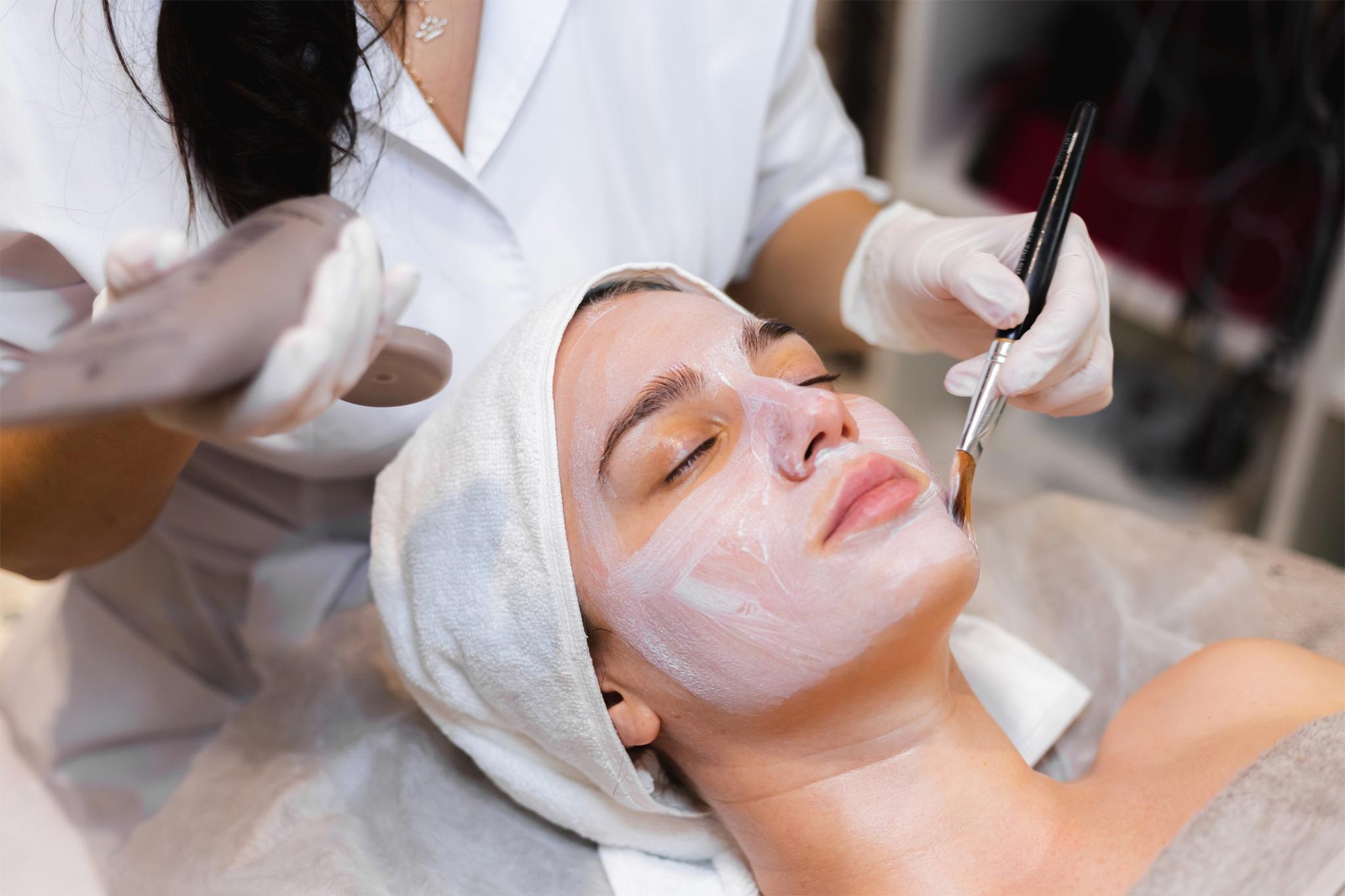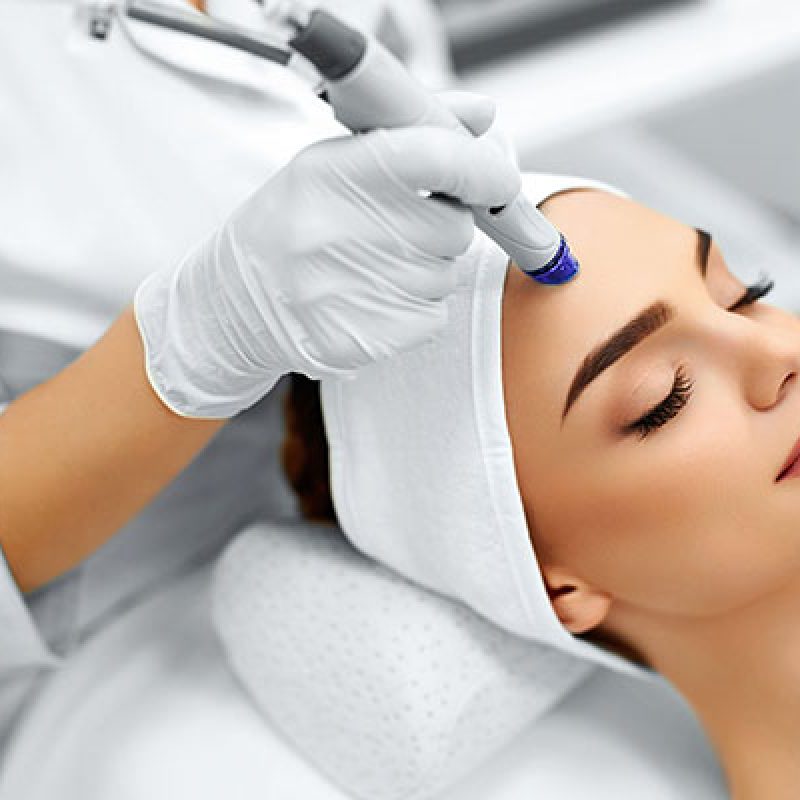What Is a HydraFacial

HydraFacial is a non-invasive skincare treatment that has gained significant popularity in recent years. It is known for its ability to rejuvenate and improve the overall appearance of the skin. This article will provide you with a comprehensive understanding of what a HydraFacial is, how it works, and its associated benefits and risks.
A HydraFacial is a skin treatment that has been developed and is offered at medical spas and dermatologist offices. It’s also sometimes called “hydra dermabrasion” because it uses exfoliating serums and a process that’s similar to microdermabrasion to remove dead skin.
The HydraFacial is known for the three steps it takes to deep clean, exfoliate, and hydrate your face. This professional process may help treat acne, dry skin, and wrinkles, among other skin problems.
The noninvasive process is like getting a normal facial at a spa, but the results are said to be more noticeable. This is done by using a machined wand on your skin to fully clean and exfoliate while putting on serums that are made for your skin type.
Understanding the HydraFacial Treatment
The HydraFacial is a multi-step facial treatment that combines exfoliation, extraction, hydration, and protection to deliver remarkable results. It utilizes a specialized handheld device that works by cleansing, extracting impurities, and infusing the skin with serums containing beneficial ingredients.
If you want to know if a HydraFacial is worth all the hype, keep reading to find out more about its possible benefits, side effects, and how it compares to other treatments.
What exactly is a HydraFacial?
A HydraFacial is a non-invasive, non-surgical skin treatment that combines cleansing, exfoliation, extraction, and hydration. It is a popular choice for people of all skin types who are looking for a way to improve the appearance of their skin.
The HydraFacial procedure is performed using a handheld device that delivers a vortex of water, serums, and suction to the skin. The water and serums cleanse and exfoliate the skin, while the suction removes impurities and dead skin cells. The final step in the procedure is the application of hydrating serums to help plump and nourish the skin.
The HydraFacial treatment is typically completed in 30-60 minutes, and there is no downtime required. Most people experience immediate results, including a smoother, brighter, and more hydrated complexion. The effects of the HydraFacial can last for several weeks.
When I get a HydraFacial, what happens?
The first step of the HydraFacial treatment is to clean the face by getting rid of dead skin cells and extra oil. Next, a mixture of salicylic and glycolic acids is put on the face to break up any dirt and oil that are clogging pores. Then, the Hydra Peel Tip is used to vacuum out blackheads, dirt, oil, and other impurities while serums that hydrate, plump, and feed the skin are applied at the same time.
What does a Hydra facial do for your skin?
As we’ve already said, hydra facial is a three-step beauty treatment that cleans, exfoliates, and moisturizes the face. Here’s what the process will be like and what it will do to your face.


- Cleaning: Cleaning is the first step of the process. The specialist will probably clean your face with products made for your skin type. This will make your face smooth for the next steps of the treatment. Exfoliation is often done as part of the cleaning process to get rid of dead skin cells and extra oil in the pores.
- Chemical peeling: In this step, a chemical peel is made for the patient’s skin type by mixing glycolic acid, salicylic acid, and other plant products. The peel is put on the skin and left there so that it can get into the inner layers and clean them better.
- Extraction: In this step, a Hoover extraction tool is used to pull out dirt from inside the pores and dead skin cells from the top layer of skin.
- Hydrating Serum: The whole process is finished by putting on a hydrating serum that soaks into the skin’s layers to keep it moist from the inside. The serum also makes the skin soft and smooth again and gets rid of any dryness or roughness.
At Dr.Pais Skin Care Clinic, you will be advised on the best treatments based on the type of your skin and the problems you are having. You wouldn’t have to worry about side effects because the process is done by a skilled and experienced person.
The Process
The treatment begins with cleansing the skin to remove any surface-level impurities. Next, a gentle exfoliation is performed to remove dead skin cells and reveal a fresh layer underneath. Afterward, a suction-based extraction process eliminates debris from the pores, reducing the appearance of blackheads and congestion.
The highlight of HydraFacial is its unique hydrating step. A blend of serums, customized to address specific skin concerns, is applied to nourish and hydrate the skin deeply. Finally, the treatment concludes with the application of protective serums and moisturizers to promote a healthy and radiant complexion.
What are the skincare benefits of HydraFacial?
A HydraFacial can help your face in a lot of different ways. It has many benefits, such as making your skin more hydrated, bright, full, and clear. Also, it can make signs of aging better. The treatment lowers fine lines and wrinkles, makes the skin firmer, evens out tone, texture, and brown spots, and shrinks pores.
a. Improved Skin Texture:The exfoliation and hydration provided by HydraFacial can enhance skin texture, leaving it smoother and softer.
b. Deep Cleansing:The extraction process helps remove impurities, minimizing the appearance of blackheads and congestion.
c. Hydration and Nourishment:The treatment infuses the skin with potent serums, delivering essential nutrients and antioxidants.
d. Addressing Specific Concerns:HydraFacial can be customized to target various skin issues, such as fine lines, wrinkles, hyperpigmentation, and acne.
e. Quick and Non-Invasive:The treatment typically takes around 30 minutes, and there is no downtime, making it convenient for those with busy schedules.
Steps to Take After a HydraFacial to Avoid Side Effects.
Even though there aren’t many side effects of hydra facial, you can still avoid soreness or other problems that could happen if you don’t take care of yourself properly. Here’s how to take care of your face after getting a HydraFacial.
Try not to pick at your skin
Your skin has just been deep cleaned, so don’t pick at it. Even on normal days, you shouldn’t pick at your skin, but you should be extra careful right after the treatment. If you want to look great, don’t touch the whiteheads and blackheads that are ruining your skin, even though you might be tempted to. Even if the beauty expert pulled out some hairs, hurting your skin more could make you feel bad. This can also help you avoid Hydra facial treatment’s side effects.
Don’t Get Wet and Work Out
You should wait about six hours after your treatment to wash your face. You also shouldn’t take a shower or work out hard enough to make yourself sweat. Also, it’s not a good idea to think, “Let’s go to the gym after getting a Hydra facial near me.” When you work out, the heat and sweat can make your freshly exfoliated skin feel too heavy. Keeping your face dry will help you keep your skin healthy and get the most out of this time.
Take the toner out for one day
Don’t use the toner the day after getting a Hydra derma facial. This is because toners with alcohol or exfoliating ingredients could cause dryness and discomfort. This might make you think of them as side effects of Hydra facial. Also, you don’t need to use a toner because the aesthetician should have already deep-cleaned your face and balanced the pH.
Change how you care for your skin
During a hydra derma facial, the physical handling and serums could damage the skin barrier. So, don’t put anything rough on your skin. If you don’t want to damage your skin’s barrier, you can only use light cleansers. Over the next two days, don’t use any skin-care products with glycolic acid or other ingredients that exfoliate your face. To avoid any hydra facial side effects, you should also wait two weeks before getting a microdermabrasion, chemical peel, or dermaplaning.
Use Sunscreen
The treatment begins with cleansing the skin to remove any surface-level impurities. Next, a gentle exfoliation is performed to remove dead skin cells and reveal a fresh layer underneath. Afterward, a suction-based extraction process eliminates debris from the pores, reducing the appearance of blackheads and congestion.
The highlight of HydraFacial is its unique hydrating step. A blend of serums, customized to address specific skin concerns, is applied to nourish and hydrate the skin deeply. Finally, the treatment concludes with the application of protective serums and moisturizers to promote a healthy and radiant complexion.
Don’t get your face waxed or treated with lasers
In about 28 to 32 days, the skin renews itself. So, you shouldn’t get a chemical peel or a laser treatment in the first month after a HydraFacial. Your esthetician will decide if it’s okay to do hair removal on your face based on how much your skin was exfoliated. It would be best to wait at least a week. Waxing removes dead skin cells, but if you do it too often, it could make your skin look dull instead of healthy. It will also help you avoid hydra facial side effects that you don’t need.
Potential Risks of HydraFacial Treatments:
HydraFacial is generally considered safe for most skin types, but there are a few risks to be aware of:
- Mild Irritation : Some individuals may experience mild redness or irritation immediately after the treatment, but it usually subsides quickly.
- Allergic Reactions : Although rare, there is a possibility of allergic reactions to the serums used during the treatment. It is important to inform the esthetician about any known allergies before undergoing the procedure.
- Unsuitable for certain skin conditions: HydraFacial may not be suitable for individuals with active rashes, sunburns, open wounds, or severe acne. It is always recommended to consult with a skincare professional at Dr. Pai’s Skin Glow clinic to determine if HydraFacial is suitable for your specific skin condition.
How often does a HydraFacial need to be done?
A HydraFacial is a non-invasive, non-surgical skin treatment that combines cleansing, exfoliation, extraction, and hydration. It is a popular choice for people of all skin types who are looking for a way to improve the appearance of their skin.
The frequency with which you need to get a HydraFacial depends on your individual skin concerns and goals. However, most people find that they need to get a HydraFacial every 4-6 weeks to maintain the results of the treatment.
If you have oily or acne-prone skin, you may need to get a HydraFacial more often, such as every 2-4 weeks. If you have dry or mature skin, you may be able to get away with getting a HydraFacial less often, such as every 6-8 weeks.
The frequency of HydraFacial treatments is a topic that is often discussed among estheticians and dermatologists. There is no one-size-fits-all answer, as the ideal frequency will vary depending on the individual’s skin type and concerns. However, some general guidelines can be followed.
.For people with oily or acne-prone skin, it is generally recommended to get a HydraFacial every 2-4 weeks. This is because oily skin is more prone to clogging and breakouts, and HydraFacial can help to remove excess oil and dirt from the pores.
For people with dry or mature skin, it is generally recommended to get a HydraFacial every 4-6 weeks. This is because dry skin can benefit from the hydration and plumping effects of the HydraFacial.
It is important to note that these are just general guidelines. The best way to determine how often you should get a HydraFacial is to talk to your esthetician or dermatologist. They can assess your individual skin concerns and recommend a treatment plan that is right for you.
HydraFacial Aftercare
Each HydraFacial takes less than an hour, and you don’t have to take any time off afterward. You can go back to your normal tasks right away, which you can’t do after more painful procedures like chemical peels.
Even though you shouldn’t have any redness or burning after your session, it’s best to stay away from exfoliating treatments for a few days.
Conclusion:
HydraFacial treatment is a non-invasive skincare procedure gaining popularity. We explain how the treatment works, and its multi-step process of cleansing, exfoliating, extracting, and hydrating the skin using serums. The benefits of HydraFacial, such as improved skin texture, deep cleansing, hydration, and addressing specific concerns, are highlighted. It also addresses potential risks, such as mild irritation or allergic reactions. Our blog concludes with aftercare tips and recommendations for the ideal frequency of getting a HydraFacial based on skin type and concerns. Overall, the blog offers valuable insights into HydraFacial, making it an informative read for anyone considering this skincare treatment.
To learn more about our Hydra facial and other skincare treatments, contact Skin Glow Intensive Aesthetic Clinic today. Our team of experts is dedicated to helping you achieve healthy, beautiful skin at any age.
